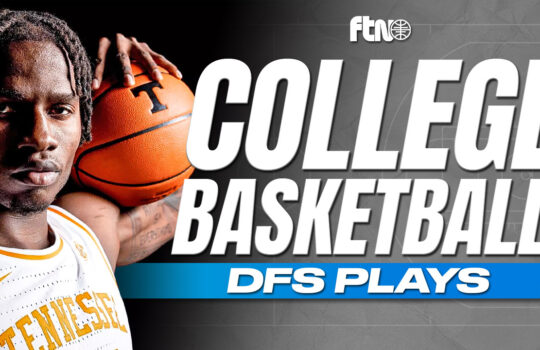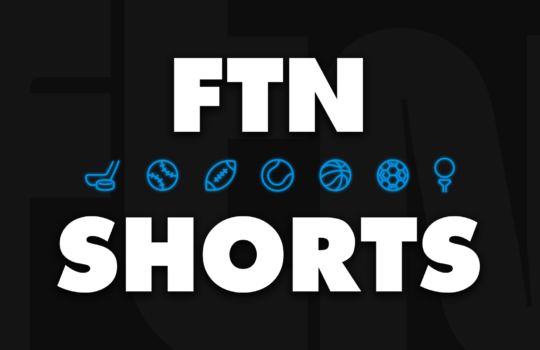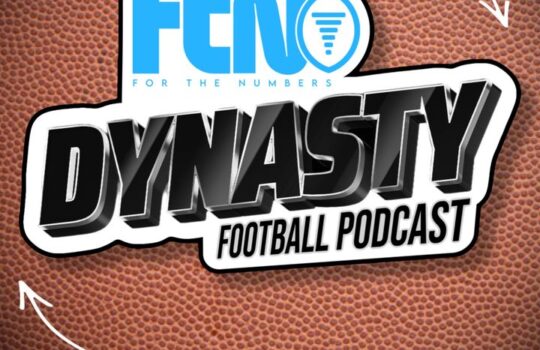
Data in baseball runs deeper and is more comprehensive than in any other sport. These are the seven stats I find most relevant to Friday’s DFS slate.
1. In the last 14 days, Boston is 1st in HRs, ISO, wOBA and wRC+
Amazingly, that may understate just how hot they are:
If you’re rooting against Boston here, you should feel pure terror. Kyle Bradish is allowing an 11% barrel rate, 41% hard hit rate and a crazy-high 92.5 mph average exit velocity. It’s still a small-ish sample for Bradish, but I think we’ve seen enough to conclude he’s a reverse-split pitcher. He’s allowing just a .209 wOBA and .024 ISO to lefties, but a whopping .478 wOBA and .357 ISO to righties.
The Red Sox will be popular, but skipping Rafael Devers in favor of an additional righty could pay massive dividends, including making your stack a bit different.
2. Shane Bieber’s CSW is down to 24.7% in the last 30 days
For those unfamiliar, CSW is the percentage of pitches that are either called strikes or whiffs. It functions as a measure of both command and quality of “stuff.” Most importantly, because it’s a rate stat by pitch instead of by at-bat, it stabilizes faster than other indicators like K rate, SIERA, xFIP, etc. In other words, changes from a player’s baseline CSW matter before changes in their other stats matter.
Well, Shane Bieber’s change in CSW matters. It is 7.7 percentage points below his baseline. 7.7! The Strikeout Model has a built-in penalty for negative CSW trends, but it can’t fully account for such an outlier. Consequently, we have to decide whether or not we want to play Bieber in such a great matchup. My lean is absolutely not, especially if he’s as popular as I expect him to be (top three on the slate).
3. Oakland is dead last in wOBA against right-handed pitching and second-to-last in wRC+ against righties
They also strike out the eighth most against righties, so this is an ideal matchup for Jon Gray. Gray has a 3.85 SIERA this season, reminding us of the pitcher he was from 2015-2018. His fastball velocity is the highest it’s been since 2019, as well. Considering the offenses, I want to fit into my lineups Friday, Gray feels like a great starting point at $5.5k on DraftKings.
4. Home runs are down tremendously this season, but they’re not down as much on Fridays
Where on Earth am I going with this? Well, earlier in the season, rumors swirled MLB was juicing balls for the two AppleTV games each Friday. Until now, there wasn’t much evidence. BallParkPal now has a Deadball Tracker, however, and we can see that while HRs are 32% below expectation overall and 33% or more below expectation on five of the seven days of the week, they’re just 26% below expectation on Fridays. Two games worth of juiced balls per day could account for this difference.
This is hard data, but it’s far from conclusive. I think the way to approach this possibility is using teams and hitters in good spots even if the ball isn’t juiced, but who clearly stand to benefit if it is. Friday, the two Apple TV games are:
- Red Sox vs. Orioles (hello, Boston!)
- Angels vs. Blue Jays
Everything about Chase Silseth that we’ve seen suggests he’s a great pitcher, but I have no issue attacking him with a Blue Jays lineup that’s showing signs of heating up.
5. Trevor Rogers is getting barreled at 8.8% this year, up from 5% in past seasons
Trevor Rogers also has a troubling 26.5% CSW in the last 30 days, nearly three percentage points below his baseline. This is not the kind of form he’d like to take into a matchup vs. the defending world champs. Atlanta’s .179 ISO vs. lefties is fourth in the majors.
I love that Rogers is mostly a two-pitch pitcher against righties with his fastball-changeup combination. Braves who have gained runs vs. both pitches since the start of 2020:
Ozzie Albies is slightly negative vs. changeups, but mashes fastballs, particularly from lefties.
6. Bailey Falter throws fastball or slider over 90% of the time
It’s a common theme: Two-pitch pitchers struggle as starters in the majors. Meanwhile, the Mets have woken up, with a 133 wRC+ and .353 wOBA over the last week. Virtually every Met is in play here, but it’s Pete Alonso and Starling Marte who crush both of Bailey Falter’s pitches and have the platoon advantage.
7. Justin Verlander is averaging 14.1 pitches per inning in 2022
Justin Verlander’s 1.22 ERA isn’t quite backed by most of his indicators. His SIERA is slightly over 3.0 (still great), his CSW is a poor 25.9%, and his K rate is down to 26.3%. How do we explain his success? Remarkable pitch-per-inning efficiency (pitch-per-inning efficiency is one of the key inputs of the Strikeout Model). For context, 15.0 is elite. On this slate, the other pitchers range from 15.3 (Cole Irvin) to 18.5 (José Quintana). Verlander’s 14.1 is so efficient that it not only explains how he’s had so much success to this point, but it’s also indicative that he has untapped strikeout potential if he needs to pitch away from contact in certain situations. I’d love to fit Verlander with Gray if possible.

















































 New York Jets
New York Jets  New England Patriots
New England Patriots  Miami Dolphins
Miami Dolphins  Buffalo Bills
Buffalo Bills  Pittsburgh Steelers
Pittsburgh Steelers  Cleveland Browns
Cleveland Browns  Cincinnati Bengals
Cincinnati Bengals  Baltimore Ravens
Baltimore Ravens  Tennessee Titans
Tennessee Titans  Jacksonville Jaguars
Jacksonville Jaguars  Indianapolis Colts
Indianapolis Colts  Houston Texans
Houston Texans  Las Vegas Raiders
Las Vegas Raiders  Los Angeles Chargers
Los Angeles Chargers  Kansas City Chiefs
Kansas City Chiefs  Denver Broncos
Denver Broncos  Washington Commanders
Washington Commanders  Philadelphia Eagles
Philadelphia Eagles  New York Giants
New York Giants  Dallas Cowboys
Dallas Cowboys  Minnesota Vikings
Minnesota Vikings  Green Bay Packers
Green Bay Packers  Detroit Lions
Detroit Lions  Chicago Bears
Chicago Bears  Tampa Bay Buccaneers
Tampa Bay Buccaneers  New Orleans Saints
New Orleans Saints  Carolina Panthers
Carolina Panthers  Atlanta Falcons
Atlanta Falcons  San Francisco 49ers
San Francisco 49ers  Seattle Seahawks
Seattle Seahawks  Los Angeles Rams
Los Angeles Rams  Arizona Cardinals
Arizona Cardinals 





 Boston Celtics
Boston Celtics  Brooklyn Nets
Brooklyn Nets  Philadelphia 76ers
Philadelphia 76ers  New York Knicks
New York Knicks  Toronto Raptors
Toronto Raptors  Chicago Bulls
Chicago Bulls  Detroit Pistons
Detroit Pistons  Milwaukee Bucks
Milwaukee Bucks  Cleveland Cavaliers
Cleveland Cavaliers  Indiana Pacers
Indiana Pacers  Orlando Magic
Orlando Magic  Atlanta Hawks
Atlanta Hawks  Charlotte Hornets
Charlotte Hornets  Miami Heat
Miami Heat  Washington Wizards
Washington Wizards  Denver Nuggets
Denver Nuggets  Minnesota Timberwolves
Minnesota Timberwolves  Oklahoma City Thunder
Oklahoma City Thunder  Portland Trail Blazers
Portland Trail Blazers  Utah Jazz
Utah Jazz  LA Clippers
LA Clippers  Golden State Warriors
Golden State Warriors  Los Angeles Lakers
Los Angeles Lakers  Phoenix Suns
Phoenix Suns  Sacramento Kings
Sacramento Kings  Dallas Mavericks
Dallas Mavericks  Houston Rockets
Houston Rockets  Memphis Grizzlies
Memphis Grizzlies  New Orleans Pelicans
New Orleans Pelicans  San Antonio Spurs
San Antonio Spurs 










